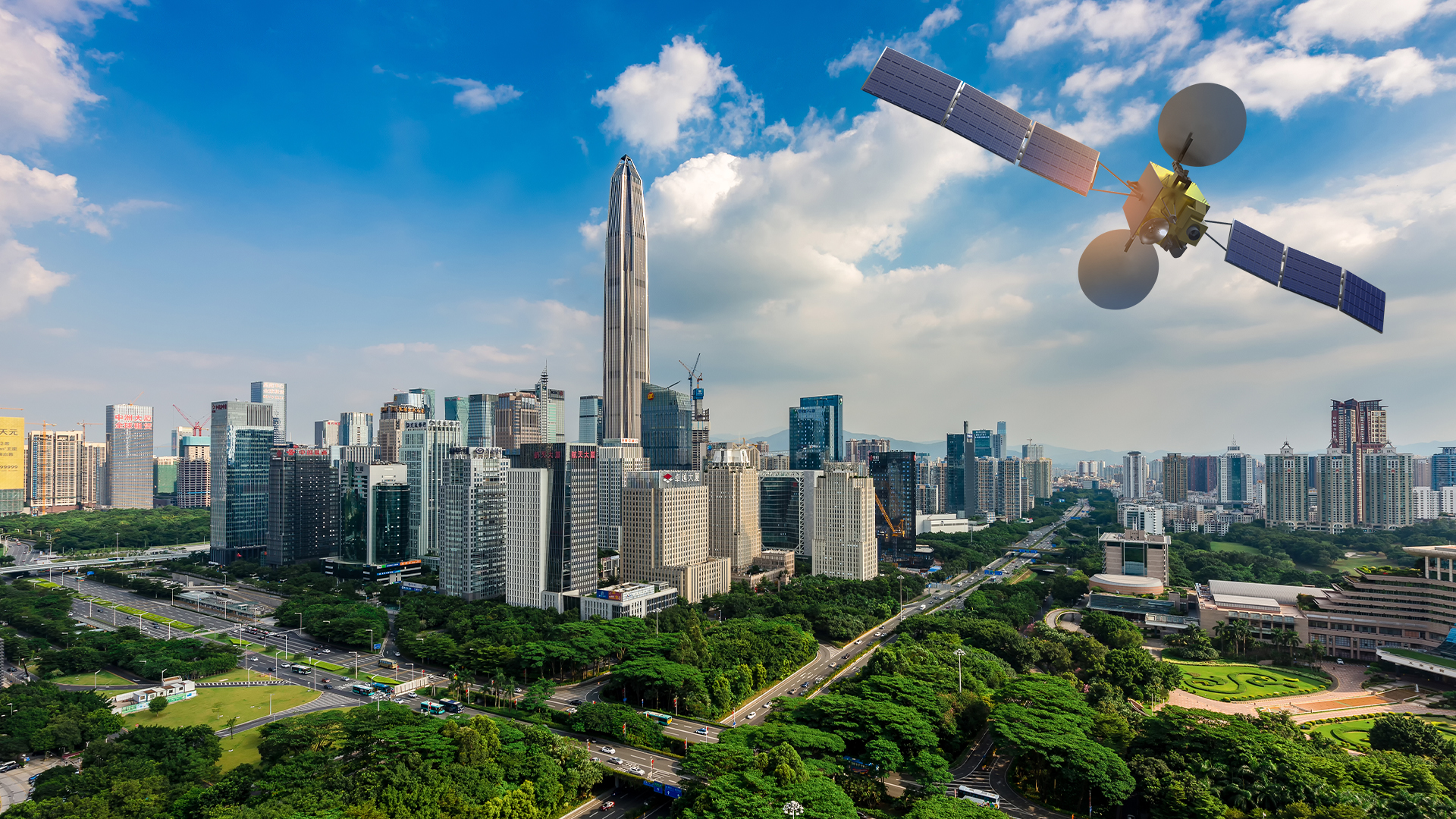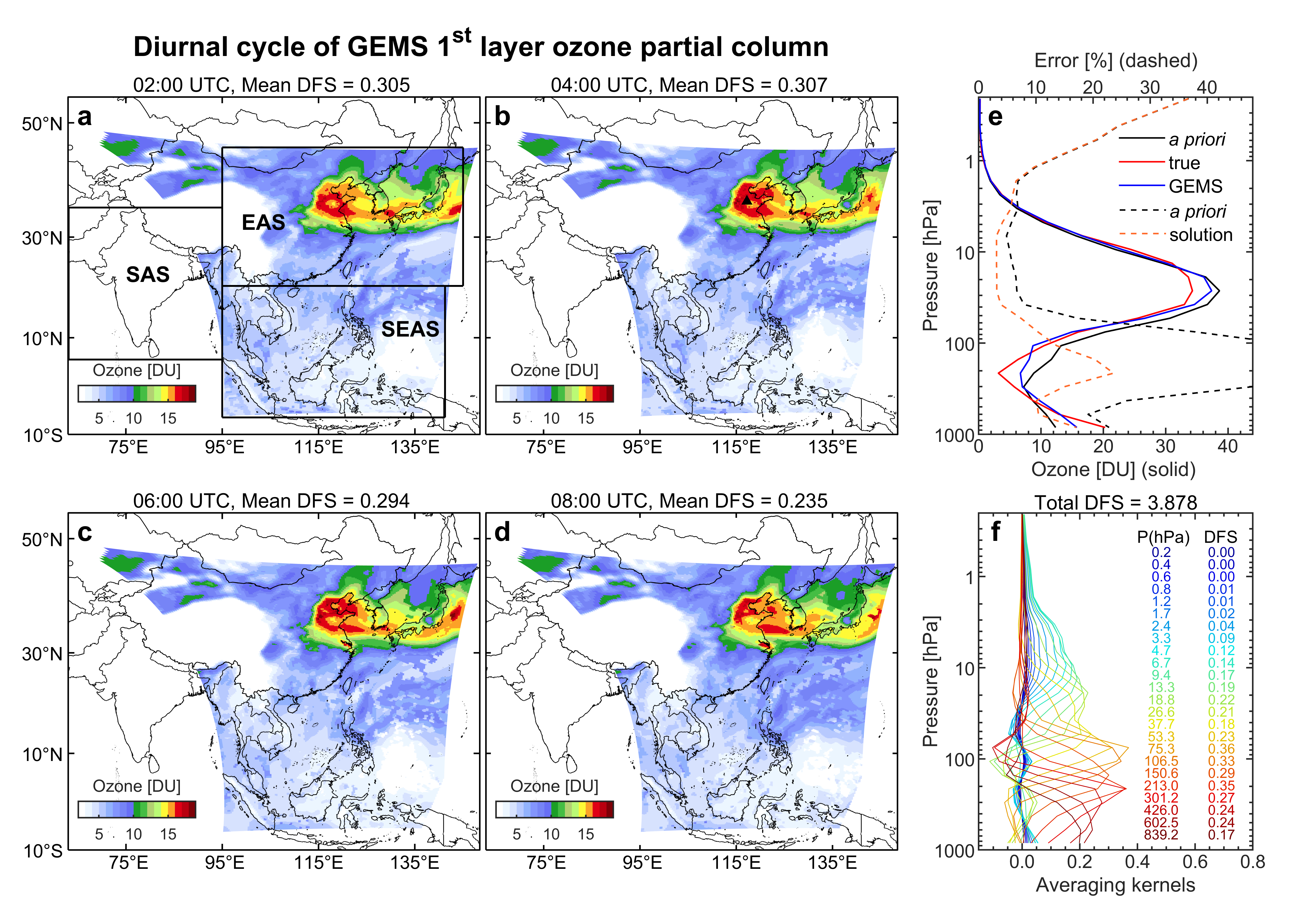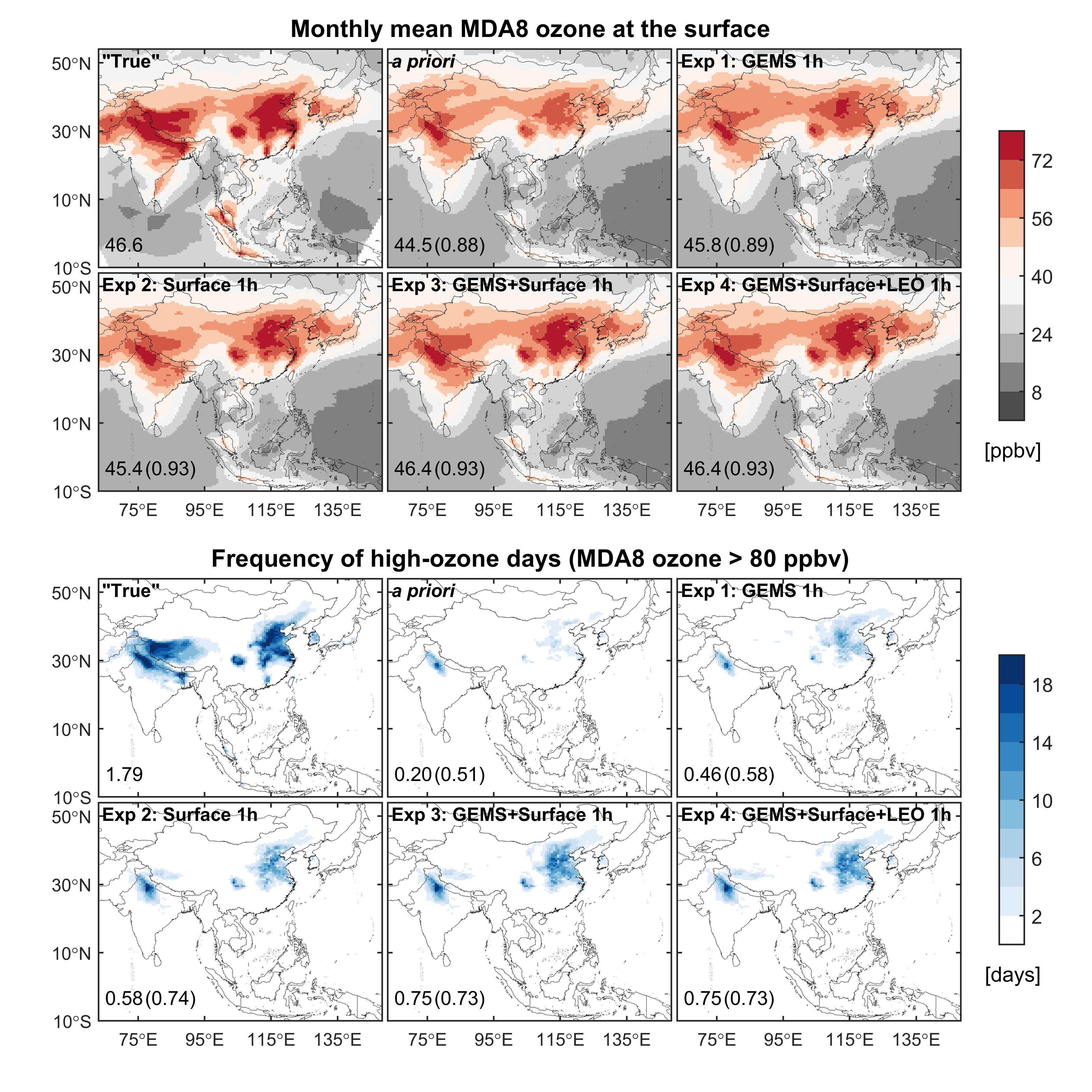Long-term exposure to ozone increases the risk of premature mortality from respiratory causes. Ozone pollution in Asia, however, has been worsening in the last decade, resulting from rapid urbanization and industrialization.
The alarming ozone pollution in Asia calls for better understanding and forecasting from air quality models. Observing air quality from space is entering a new era of geostationary satellites, marked by the launch of the Geostationary Environment Monitoring Spectrometer (GEMS) on February 2020.

Assistant Professor Lei Zhu’s research group from the School of Environmental Science and Engineering (ESE) at the Southern University of Science and Technology (SUSTech) investigates the benefit of multiple ozone observations from the GEMS geostationary satellite, low Earth orbit (LEO) satellite, and surface networks on summertime ozone simulations through individual or joint data assimilation, built on their previous work.
Their paper, entitled “Improving ozone simulations in Asia via multisource data assimilation: results from an observing system simulation experiment with GEMS geostationary satellite observations”, has been published in Atmospheric Chemistry and Physics, a prestigious journal dedicated to investigating the Earth’s atmosphere and the underlying chemical and physical processes.
In comparison to GEMS, the retrieval quality of LEO is significantly better, above 200 hPa for representing the stratosphere and upper troposphere. GEMS has stronger vertical sensitivity and smaller retrieval errors relative to LEO at each layer below 200 hPa, providing sufficient measurement information to characterize tropospheric and near-surface ozone. Specifically, GEMS has more potential to capture the hot spots and diurnal evolution of ozone pollution in East Asia.

Figure 1. Example of diurnal cycles of surface-layer ozone partial column from GEMS
The researchers found that data assimilation improves the monitoring of exceedance, spatial patterns, and diurnal variations of surface ozone, with a regional mean negative bias reduction from 2.1 to 0.2–1.2 ppbv in ozone simulations in most Asian countries. GEMS also brings direct added value for better-reproducing ozone vertical distributions, especially in the middle to upper troposphere at low latitudes. However, GEMS may mask the added value of LEO measurements, which are crucial to constrain surface and upper tropospheric ozone simulations when observations from other platforms are inadequate.

Figure 2. Improved ozone simulations via assimilating different data sets
The improvements introduced by the multisource data assimilation using GEMS geostationary observations are promising, although the data assimilation experiments still have difficulty reproducing the observed ozone features fully. This study provides a valuable reference for ozone data assimilation as multisource observations become gradually available in the era of geostationary satellites.
Dr. Lei Shu of the School of ESE at SUSTech is the first author of this paper. Asst. Prof. Lei Zhu is the corresponding author, and SUSTech is the first corresponding unit.
This study was supported by the Key-Area Research and Development Program of Guangdong Province, Guangdong Basic and Applied Basic Research Foundation, Guangdong Basic and Applied Basic Research Fund, Guangdong University Research Project Science Team, Shenzhen Science and Technology Program, and the China Postdoctoral Science Foundation.
Paper link: https://acp.copernicus.org/articles/23/3731/2023/
To read all stories about SUSTech science, subscribe to the monthly SUSTech Newsletter.
Proofread ByAdrian Cremin, Yingying XIA
Photo By